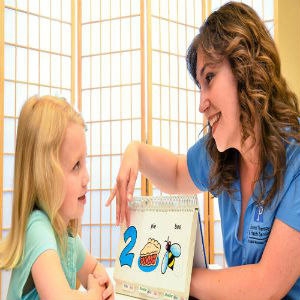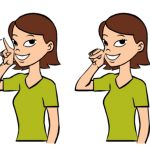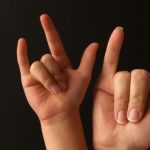

There is nothing more heartrending than the experience of having children who suffer from speech disorders. Often, parents try a variety of remedies to solve the issue. Some of the most popular non-invasive techniques include traditional massages, coupled with regular speech therapy. This form of treatment has been endorsed by several prominent speech therapists like Dr. Debra C. Lowsky, and Dr.Dyakova, and is now being practised in renowned centres like Riverday Spa. Such a combination of treatments, according to parentcenterhub.org, are effective in the case where the lack of speech is due to a mild weakening of the muscles that control speech.
Children with severe forms of speech disorder, especially of the rare case like apraxia of speech, find sign language paired with intense speech therapy, as the best treatment option. The effectiveness of the therapy is proved by various studies particularly in the cases of early diagnosis.
Children affected by apraxia of speech find it difficult to pronounce certain words due to the lack of muscle coordination. The disorder is diagnosed at around the age of 2 years and is confirmed when the child is 3. Early intervention has shown remarkable improvement in various developmental conditions and the same has been adopted for children with apraxia.
When it comes to best practices, there is a lot that needs to be proven scientifically, but nevertheless, the growing body of literature is doing its part in providing guidance, as regards the course of treatment for those with rare speech disorders. Though there are devices for creating electronic voice, there is nothing done so far using sign language. However, there is a misconception that teaching sign language or using a device can only slow down the speaking process. At this point, it becomes necessary to state that it has been proved that sign language can motivate verbal speech and can contain frustration.
Let us take a look at a case study where the patient took intensive speech therapy with two therapeutic programs, one for the development of the mouth muscle control for creating sound, and the other to develop a sensible form of communication via sign language. The child’s tongue movement was controlled by a home program prescribed to the mother. The child had restricted verbal communication skills before the treatment, but after taking the treatment, the child was able to converse with his parents, who understood 90% of what he said. And the good news is that the speech therapist was able to comprehend 80% of what the child uttered. As the speech developed the sign language was discontinued. The results of the study were reported in a popular Paediatrics journal.
 This study goes to prove that using sign language along with sound therapy helps to improve the language development in a child. The combination helps to enhance the functioning of the mouth muscles and correct speech related issues quickly. However, there is a need for more research on the subject to determine the combined use of sign language in correcting apraxia of speech. The results were extraordinary when early detection and early treatment are combined together. It must be remembered that further research in this area is recommended.
This study goes to prove that using sign language along with sound therapy helps to improve the language development in a child. The combination helps to enhance the functioning of the mouth muscles and correct speech related issues quickly. However, there is a need for more research on the subject to determine the combined use of sign language in correcting apraxia of speech. The results were extraordinary when early detection and early treatment are combined together. It must be remembered that further research in this area is recommended.
In the future it is important to determine what type of children will respond to early intervention, the significance of using multiple methods simultaneously, using sign language and other communication techniques to resolve the symptoms. Over a period of time with advanced research in the field, more appropriate results will be put up on the success of multiple therapies for apraxia of speech. More alternative communication techniques need to be embraced to see quick and positive results in the case.
Click To Know More About : Awareness About Hearing Disabilities











